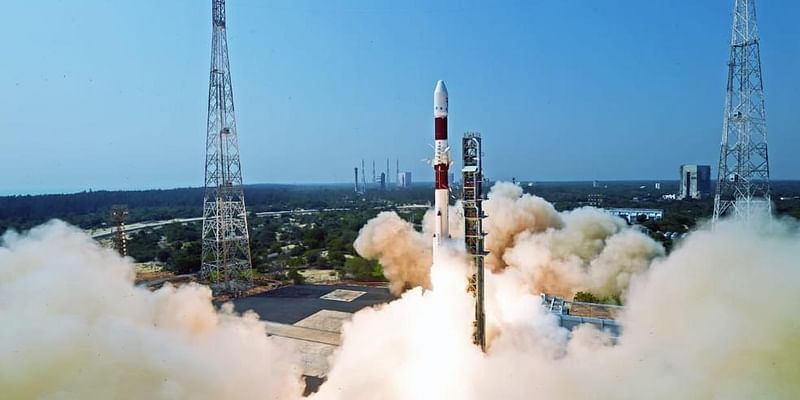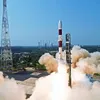
ISRO was holding discussions ‘internally’ on its plan for the launch of the Chandrayaan-4 mission and was involved in developing a ‘novel design’ and ‘high-end technology’ in this connection, a top official said on Saturday.
After successfully launching the Chandrayaan-3 rocket on the south pole of the Moon in August 2023, ISRO has drawn up a more “complex” mission of bringing back the soil from the surface of the Moon to the Earth.
On Saturday, after the successful launch of GSLV-F14/INSAT-3DS satellite, ISRO Chairman S Somanath said the Bengaluru-headquartered space agency wanted to send Chandrayaan 4, 5, 6 and 7 missions, in future, following the success of Chandrayaan-3 mission.
“We are working on what the Chandrayaan-4 spacecraft should contain. The first question is what Chandrayaan-4 should have (as the payload); this is the question we are asking,” Somanath said.
Observing that the plan was to do something different, he said, “The first thing we decided is at least Chandrayaan-4 should have a sample of Moon’s soil, which is to be brought back to Earth. We want to do this in a robotic way. So, this is the discussion going on internally.”
“All of us are involved in this discussion on how to do this work with available rockets. You know going to the Moon, bringing back a sample is a very complex work. Not landing there (like the Chandrayaan-3 mission). Again another rocket has to take off from the Moon, come back to the Earth and land on Earth, which is double the work of what we have done last time,” Somanath said.
“So, our rockets today are not fully capable. So, because of this we are trying a novel design, which I will not tell you now, it will be secret,” he said.
The Secretary of the Department of Space said the scientists would develop a high-end technology for the Chandrayaan-4 mission.
.thumbnailWrapper
width:6.62rem !important;
.alsoReadTitleImage
min-width: 81px !important;
min-height: 81px !important;
.alsoReadMainTitleText
font-size: 14px !important;
line-height: 20px !important;
.alsoReadHeadText
font-size: 24px !important;
line-height: 20px !important;

“There is going to be high-end technology, which we are developing to do this mission. We will soon come back after the government approvals. We have to tell the government that this is the way (to do the mission), this is the money required, and then they have to sanction. Only then I can tell outside world. Until then please wait,” he said.
To a query on today’s successful launch of the GSLV-F14 INSAT-3DS satellite, he said gradually the scientists would “decommission” the INSAT-3D satellite launched in 2013 as its functions were ‘deteriorating’.
“We will use it (INSAT-3D) satellite for a different purpose and we will inform you later, ” he said without divulging further details.
Edited by Suman Singh








![Read more about the article [Startup Bharat] From birth certificate to passport, Chandigarh-based eSahayak.io is simplifying paperwork](https://blog.digitalsevaa.com/wp-content/uploads/2021/06/WhatsAppImage2021-06-16at2-1623834138523-300x150.jpg)

![Read more about the article [Jobs Roundup] These openings may help you land a role at fintech startup OkCredit](https://blog.digitalsevaa.com/wp-content/uploads/2021/05/Image5q47-1608119814252-300x150.jpg)